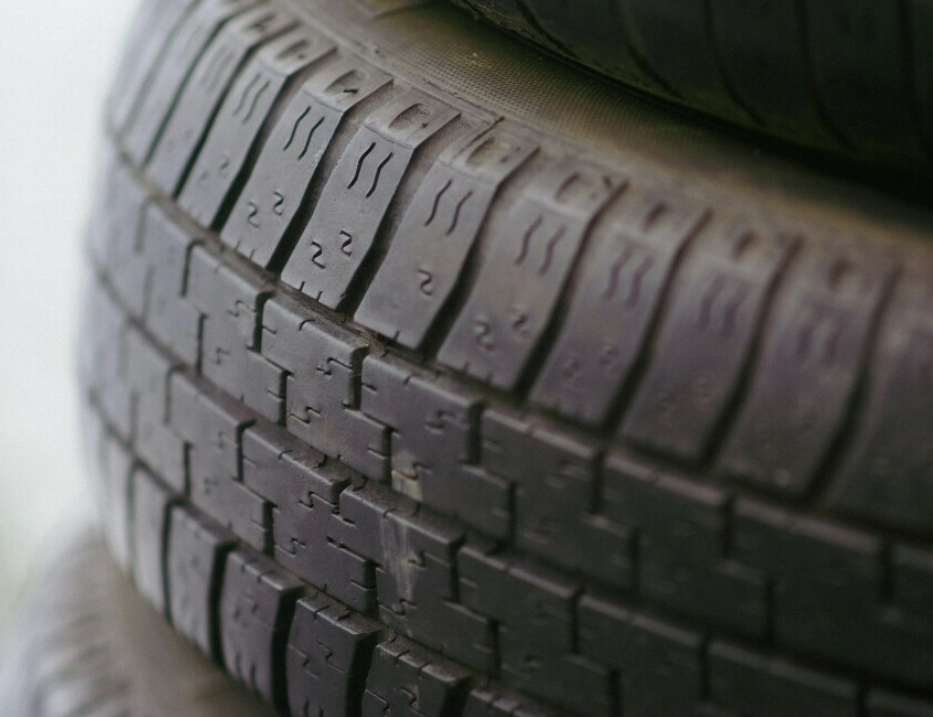
In this blog, Advanced Tips For Maintaining Golf Cart Tires, we provide expert advice on how to keep your golf cart tires in top condition, from regular inspections to preventative maintenance techniques. So, whether you use your golf cart for leisurely rounds on the course or practical transportation around your property, understanding how to maintain your tires can save you time, money and headaches in the long run.
Maintaining golf cart tires might not be the first thing that comes to mind when you think about upkeep, but neglecting them can lead to more than just a bumpy ride on the green. Proper tire maintenance is essential for both the performance and safety of your golf cart. From extending the lifespan of your tires to ensuring optimal traction and handling, taking care of your golf cart tires is key to getting the most out of your driving experience.
With that said, if you’re ready to hit the green with confidence and ensure smooth sailing (or should we say rolling?) on your next golf cart adventure, read on to discover the secrets of effective golf cart tire maintenance.
Understanding Golf Cart Tire Maintenance
Golf cart tires are a unique component of these specialized vehicles, requiring specific care and attention to ensure optimal performance. Unlike standard vehicle tires, golf cart tires are designed to navigate various terrains, from smooth fairways to rugged off-road trails. Understanding the intricacies of golf cart tire maintenance is essential for maximizing their lifespan and ensuring a safe and enjoyable driving experience.
One of the primary differences between golf cart tires and standard vehicle tires is their construction. Golf cart tires are typically smaller in size and made from specialized rubber compounds designed to withstand the weight distribution and terrain challenges specific to golf carts. Additionally, golf cart tires often feature unique tread patterns tailored to provide optimal traction on grass, gravel, and other surfaces commonly encountered on golf courses or properties.
Despite their robust construction, golf cart tires are not immune to wear and tear. Over time, factors such as prolonged exposure to UV rays, harsh weather conditions, and rough terrain can take their toll on tire integrity. Common issues faced by golf cart tires include tread wear, sidewall damage, punctures, and improper inflation.
Regular inspections are crucial for identifying signs of tire damage or wear early on. Visual inspections should include checking for uneven tread wear, cuts, cracks, bulges, and embedded debris. Additionally, monitoring tire pressure is essential for maintaining optimal performance and safety. Golf cart tires that are overinflated or under inflated can lead to reduced traction, poor handling, and increased risk of blowouts.
Regular Inspections
Performing regular inspections of your golf cart tires is a fundamental aspect of tire maintenance that can help detect issues early and prevent more significant problems down the road. These inspections don’t require any specialized tools and can be done quickly before each use of your golf cart. By incorporating regular tire checks into your routine, you can ensure that your tires remain in optimal condition and that your golf cart operates safely and efficiently.
Here’s a step-by-step guide on how to conduct a thorough visual inspection of your golf cart tires.
1. Check Tread Wear: Start by examining the tread pattern on each tire. Look for signs of uneven wear, such as bald spots or excessive wear on one side of the tire. Uneven tread wear can indicate alignment issues or improper tire inflation.
2. Inspect for Cuts and Cracks: Carefully inspect the sidewalls and tread surface of each tire for any cuts, cracks, or gouges. Even small cuts or cracks can compromise tire integrity and increase the risk of a blowout, especially when driving over rough terrain.
3. Look for Bulges: Check for any bulges or bubbles on the sidewalls of the tires. Bulges can indicate internal damage or weak spots in the tire structure, which can lead to sudden tire failure if not addressed promptly.
4. Remove Debris: Remove any debris, such as rocks, sticks, or glass, that may be embedded in the tread of the tires. Embedded debris can cause punctures or damage to the tire over time and should be removed to prevent further harm.
5. Check Valve Stems: Inspect the valve stems for signs of damage or leaks. Ensure that the valve caps are securely in place to prevent dirt and moisture from entering the valve stem, which can lead to air loss.
6. Verify Tire Pressure: Use a tire pressure gauge to check the air pressure in each tire. Refer to the manufacturer’s specifications for the recommended tire pressure, and adjust as necessary. Proper tire inflation is crucial for maintaining traction, handling, and overall tire performance.
By incorporating these simple visual inspections into your regular maintenance routine, you can catch potential tire issues early and address them before they escalate into more significant problems. Taking proactive measures to ensure the health and integrity of your golf cart tires will not only prolong their lifespan but also enhance the safety and performance of your golf cart on the course or around your property.
So, make it a habit to give your golf cart tires a thorough once-over before each outing, and enjoy peace of mind knowing that your tires are ready to roll wherever the road may take you.
Proper Inflation
Maintaining the correct tire pressure is essential for ensuring optimal performance, safety, and longevity of your golf cart tires. Improperly inflated tires can lead to a host of issues, including reduced traction, uneven wear, poor handling, and increased risk of blowouts. Therefore, regularly checking and maintaining the proper tire pressure is a simple yet crucial aspect of golf cart tire maintenance.
Here’s a detailed guide on how to properly inflate your golf cart tires.
Start by referring to the manufacturer’s specifications or the owner’s manual for the recommended tire pressure for your golf cart. The recommended tire pressure can vary depending on the type of tires, load capacity, and specific model of the golf cart.
Next, invest in a reliable tire pressure gauge to accurately measure the air pressure in each tire. Avoid relying on visual inspection or guessing the tire pressure, as these methods can be inaccurate and lead to improper inflation.
Furthermore, tire pressure should be checked when the tires are cold, preferably before driving or when the tires have not been in use for an extended period. Tire pressure can increase as tires heat up during driving, leading to inaccurate readings.
Then, unscrew the valve stem cap from each tire to access the valve stem. Keep the valve stem caps in a safe place to prevent loss and to ensure they are not misplaced during the inflation process.
Next, place the tire pressure gauge onto the valve stem and press firmly to create a seal. Wait for the gauge to display the tire pressure reading and compare it to the recommended pressure specified by the manufacturer.
Then, if the tire pressure is below the recommended level, use an air compressor to inflate the tire to the appropriate pressure. If the tire pressure is too high, use the pressure release valve on the air compressor or a tire pressure gauge with a pressure release feature to deflate the tire gradually until it reaches the correct pressure.
Next, repeat the process for each tire, including the spare tire if applicable, to ensure uniform inflation across all tires.
Lastly, once the tires are properly inflated, securely screw the valve stem caps back onto each valve stem to prevent dirt, moisture, and debris from entering the valve stems.
By following these steps and maintaining the proper tire pressure, you can ensure that your golf cart tires perform optimally and provide a smooth and safe driving experience on the course or wherever your adventures take you. Regularly checking and adjusting tire pressure is a simple yet effective way to extend the lifespan of your golf cart tires and minimize the risk of unexpected tire-related issues.
So, make it a habit to include tire pressure checks in your regular maintenance routine and enjoy worry-free rides on your golf cart.
Tire Rotation

Tire rotation is a crucial aspect of golf cart tire maintenance that often gets overlooked. Rotating your golf cart tires involves moving them from one position to another on the vehicle at regular intervals to ensure even wear and maximize tire lifespan. This simple maintenance task can help distribute the wear more evenly across all four tires, prolonging their longevity and optimizing performance.
Golf cart tires are subjected to different levels of stress depending on their position on the vehicle. For example, front tires tend to wear more quickly than rear tires due to steering and braking forces. By rotating the tires regularly, you can ensure that each tire wears down at a similar rate, extending the overall lifespan of the tire set.
In addition, unevenly worn tires can affect the handling and stability of your golf cart, especially on uneven terrain or during sharp turns. Rotating the tires helps maintain consistent tread depth across all tires, resulting in better traction, handling, and overall performance.
Furthermore, certain driving habits or vehicle conditions can lead to irregular wear patterns on golf cart tires, such as cupping, feathering, or camber wear. Rotating the tires can help mitigate these issues by spreading out the wear more evenly and minimizing the impact of specific driving conditions.
So, how often should you rotate your golf cart tires? While the specific interval may vary depending on factors such as tire type, driving conditions, and manufacturer recommendations, a general rule of thumb is to rotate the tires every 6 months or every 5,000 miles, whichever comes first.
Here’s a simple step-by-step guide on how to rotate your golf cart tires:
1. Jack Up the Golf Cart: Use a jack to lift the golf cart off the ground, ensuring it is stable and securely supported.
2. Remove the Tires: Carefully remove each tire from its position on the golf cart, taking note of its original location.
3. Inspect the Tires: While the tires are off, take the opportunity to inspect them for signs of wear, damage, or any other issues that may require attention.
4. Rotate the Tires: Move each tire to a different position on the golf cart, following a specific rotation pattern recommended by the manufacturer or based on the wear patterns observed during inspection. For example, you may choose to rotate the tires in a crisscross pattern (front left to rear right, front right to rear left) or a simple front-to-back rotation.
5. Reinstall the Tires: Once the tires have been rotated, securely reinstall them onto the golf cart in their new positions.
6. Lower the Golf Cart: Carefully lower the golf cart back to the ground using the jack, ensuring that it is stable and level before removing the jack.
By incorporating tire rotation into your regular maintenance schedule, you can prolong the lifespan of your golf cart tires, improve vehicle performance, and ensure a smoother and safer driving experience on the course or around your property. Don’t overlook this simple yet essential maintenance task—your tires will thank you for it!
Preventative Maintenance
In addition to regular inspections, proper inflation, and tire rotation, incorporating preventative maintenance measures into your routine can further enhance the longevity and performance of your golf cart tires.
These proactive steps can help minimize the risk of tire damage, reduce the frequency of repairs, and ensure that your golf cart remains in top condition for years to come. Here are some preventative maintenance tips to consider.
1. Avoid Rough Terrain: Limiting exposure to rough or uneven terrain can help reduce the risk of tire damage and premature wear. Whenever possible, stick to well-maintained pathways and avoid driving over rocks, tree roots, or other obstacles that could puncture or damage the tires.
2. Clean Tires Regularly: Dirt, mud, and debris can accumulate on the surface of your golf cart tires during use, potentially causing abrasion and accelerating tire wear. Make it a habit to clean your tires regularly using mild soap, water, and a soft brush to remove dirt and debris. Avoid using harsh chemicals or abrasive cleaners, as these can damage the tire rubber.
3. Inspect for Leaks: Periodically inspect the tires for signs of leaks or punctures that could lead to air loss. Look for any visible damage to the tire surface or objects lodged in the tread that may be causing a leak. If you notice any leaks, promptly repair or replace the affected tire to prevent further damage or loss of air pressure.
4. Use Tire Sealant: Consider using a tire sealant product designed to prevent punctures and seal minor leaks in the tire tread. These sealants can help provide an extra layer of protection against punctures from sharp objects such as thorns or nails, reducing the risk of flat tires and extending tire life.
5. Store Tires Properly: When storing your golf cart for an extended period, such as during the off-season, take steps to protect the tires from damage. Store the golf cart in a cool, dry location away from direct sunlight and extreme temperatures. If possible, elevate the tires off the ground or use tire covers to prevent flat-spotting and deterioration.
6. Inspect Suspension Components: The condition of your golf cart’s suspension system can also impact tire wear and performance. Regularly inspect suspension components such as shocks, springs, and bushings for signs of wear or damage, and address any issues promptly to prevent excessive tire wear and maintain proper alignment.
Incorporating these preventative maintenance measures into your regular upkeep routine can help preserve the condition of your golf cart tires and minimize the need for costly repairs or replacements. By taking proactive steps to protect and maintain your tires, you can enjoy a smoother, safer and more enjoyable driving experience on the course or wherever your golf cart adventures take you.
Conclusion
Maintaining your golf cart tires is not just about ensuring a smooth ride on the course—it’s about prioritizing safety, prolonging tire lifespan, and maximizing the performance of your vehicle. From regular inspections to proper inflation, tire rotation, and preventative maintenance measures, taking care of your golf cart tires requires a combination of diligence and attention to detail.
By implementing the expert advice provided in this guide, you can stay ahead of potential tire issues, minimize the risk of unexpected breakdowns, and ensure that your golf cart remains in top condition for years to come. Whether you use your golf cart for leisurely rounds on the green or practical transportation around your property, investing time and effort into tire maintenance pays off in the long run.
So, the next time you hit the course or embark on a golf cart adventure, take a moment to inspect your tires, check the air pressure, and consider the terrain ahead. By making tire maintenance a priority, you can enjoy a smoother, safer, and more enjoyable driving experience on your golf cart, knowing that your tires are ready to roll wherever the road may take you.
Remember, proper tire maintenance is not just about extending tire lifespan—it’s about protecting your investment and ensuring that your golf cart is always ready for action. So, take the time to give your tires the attention they deserve, and enjoy peace of mind knowing that you’re driving on tires that are as well-maintained as they are reliable.
 Happy Carting!
Happy Carting!
Related Article
Custom Golf Cart Bodies | Radical Body Kit Transformations
Shop Golf Carts

